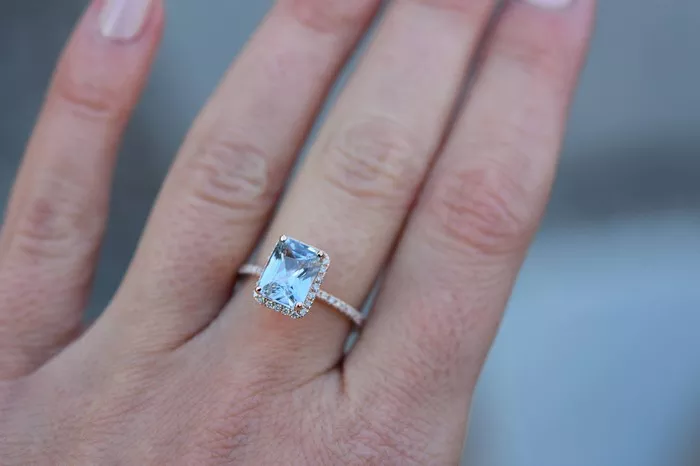When investing in a diamond ring, ensuring its authenticity is crucial for both financial and sentimental reasons. Whether you’re purchasing a diamond ring or already own one, verifying its authenticity can provide peace of mind and protect against potential fraud. While professional certification is the most reliable method, there are several at-home tests you can perform to assess the likelihood of a diamond’s authenticity. In this guide, we’ll explore various methods to help you determine whether your diamond ring is genuine.
1. The Water Test:
One of the simplest and oldest tests for diamond authenticity is the water test. To perform this test, fill a glass with water and carefully drop the diamond into the water. A genuine diamond will sink to the bottom due to its high density. If the stone floats or remains suspended near the surface, it is likely a fake. However, it’s important to note that this test may not be foolproof as some materials, such as cubic zirconia, have similar density properties to diamonds.
2. The Fog Test:
Another popular at-home method is the fog test. Simply breathe on the surface of the diamond to create a layer of fog. A real diamond will disperse the fog almost immediately due to its high thermal conductivity. Conversely, a fake diamond or simulant will retain the fog for a longer period. Keep in mind that this test is not definitive, as other materials with high thermal conductivity, such as moissanite, may also disperse the fog quickly.
3. Check the Setting & Mount:
Inspecting the setting and mount of the diamond ring can also provide clues about its authenticity. High-quality diamonds are typically set in precious metals such as gold or platinum, whereas fake diamonds may be set in cheaper materials like brass or stainless steel. Examine the craftsmanship of the setting for signs of poor quality or irregularities, as genuine diamonds are usually set with precision and care. Additionally, authentic diamond rings often feature hallmarks or stamps indicating the metal type and quality, providing further reassurance of authenticity.
4. Visual Inspection with Magnification:
For a more detailed assessment, use a jeweler’s loupe or magnifying glass to examine the diamond closely. Look for inclusions, imperfections, or “nature’s fingerprints” within the stone, as these are typical characteristics of real diamonds. Genuine diamonds often contain tiny imperfections known as inclusions, whereas lab-created or synthetic diamonds may appear flawless under magnification. Additionally, observe the edges of the diamond for signs of wear or abrasion, as authentic diamonds are extremely durable and resistant to scratches.
5. The Dot Test:
The dot test is a straightforward method to differentiate between real and fake diamonds based on their thermal conductivity. Begin by drawing a small dot with a pen on a piece of paper. Place the diamond face down on the dot and observe how quickly the dot disappears. A real diamond will disperse the heat rapidly, causing the dot to vanish almost immediately. In contrast, a fake diamond or simulant will retain the heat, resulting in the dot remaining visible for a longer duration. While this test can provide useful insights, it is not foolproof and should be used in conjunction with other methods for a more accurate assessment.
6. Expert Verification:
While at-home tests can offer preliminary indications of a diamond’s authenticity, they are not infallible. For conclusive verification, it is essential to seek the expertise of a certified gemologist or jeweler. These professionals have the training, experience, and specialized equipment necessary to accurately assess the authenticity of diamonds. When choosing a gemologist or jeweler, opt for reputable establishments with recognized credentials and a track record of integrity. Additionally, consider requesting a diamond grading report from a reputable gemological laboratory such as the Gemological Institute of America (GIA) or the American Gem Society (AGS) for added assurance.
In conclusion, verifying the authenticity of a diamond ring at home can be a valuable skill for consumers and enthusiasts alike. By utilizing a combination of at-home tests and expert verification, you can confidently assess the legitimacy of your diamond ring and make informed decisions regarding its purchase or ownership. Remember that while at-home tests can provide useful insights, they should be used as preliminary measures rather than definitive determinants of authenticity. When in doubt, always consult a professional gemologist or jeweler for accurate assessment and peace of mind.

